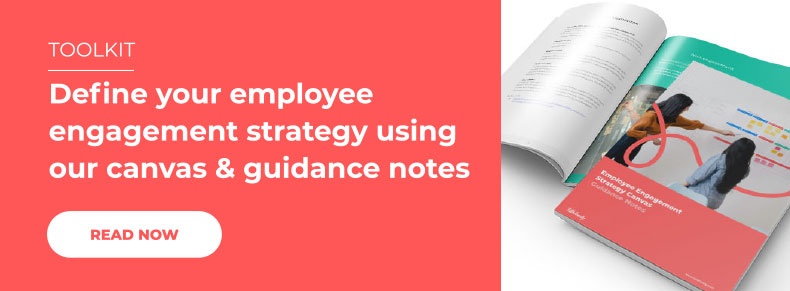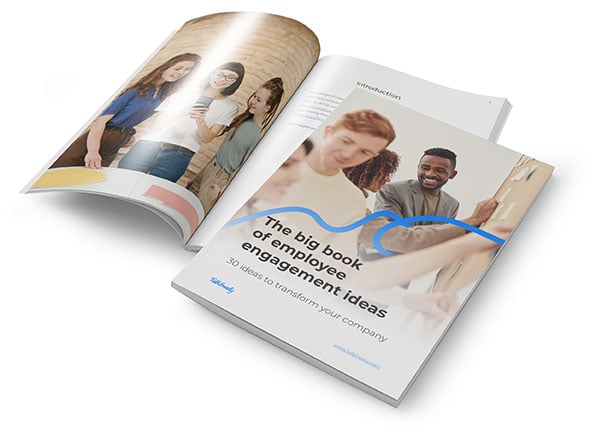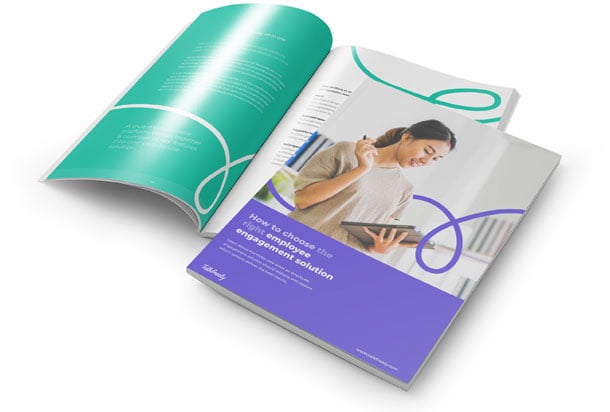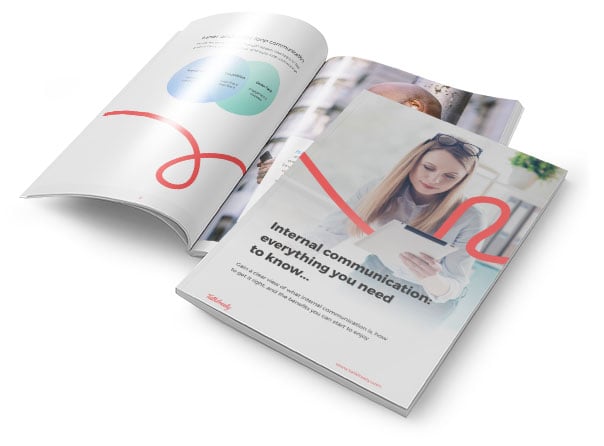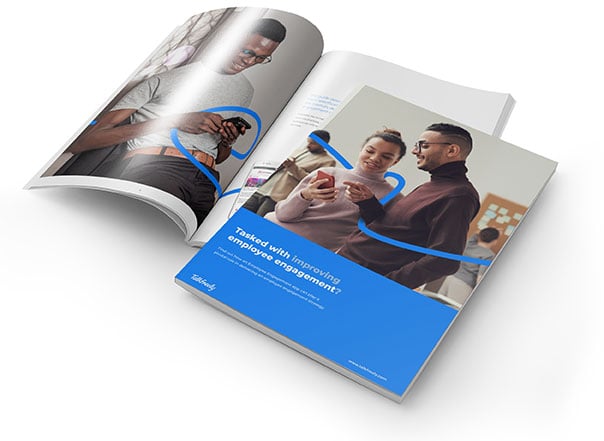Every business takes its own unique approach to employee engagement, and that’s no surprise. There isn’t a one-size-fits-all solution to engaging with your workforce. Each organisation will have a different set of challenges and objectives, each requiring a personalised approach to the issue.
The new challenges thrown up by the pandemic have only added to the complexity of the subject. With a mix of remote and office-based employees, ever-changing rules and regulations, and a general feeling of uncertainty, employee engagement has become a complicated task. How can you best tailor your employee engagement strategy to suit the ever-changing needs of your business?
In this blog, we take a look at the fundamental ground rules of employee engagement best practices. By applying these essential elements to your employee engagement initiatives, you’ll find you’re setting out on the right track to success.
The 3 Ground Rules
There has been a lot of research on best practices for employee engagement, based on various models ranging from Kahn’s dimensions of employee engagement to job design. However, there are a number of fundamental employee engagement factors that are mentioned time and time again:
1. Vision - making sure that employees understand what they are working towards
2. Values - encouraging the alignment of employee values with company values
3. Voice - giving employees real opportunities to have their say and influence the way things are done
The challenge lies in delivering these three ground rules of best practice to diverse and often hard to reach workforces. Digital solutions such as an employee engagement app can overcome many practical barriers - such as employees being on different shifts or in different locations - and support the right combination of employee engagement practices within companies.
Ground Rule #1: Vision
Communicating organisational vision to employees is the foundation upon which other best HR practices for employee engagement can be built. When employees are located across different sites or have little contact with a company’s Head Office, they often feel disconnected from the overall purpose of the organisation. Recent research shows that, since the pandemic began, 74% of employees have the feeling they are missing out on important company news. It is essential to combat this in order to increase employee engagement.
There is evidence to suggest that a shared vision sets a clear direction of travel for employees. Engage For Success, a key UK voluntary organisation that supports employee engagement practices, states that a best practices employee engagement plan involves sharing an understanding of the organisation’s purpose and objectives.
Employee engagement best practices require communicating the company’s vision well, followed by managers setting individual and team goals that link employees’ daily tasks to strategic aims. One way to start this type of employee engagement is to ensure that the company’s vision statement has the power to motivate employees to make that additional effort. An effective vision statement has a clear alignment to the company’s culture and is born from the company’s values and goals. Clarity of vision should be one of your key employee engagement objectives.
Action point: Your leadership team are best placed to relate the company vision to your workforce, so concentrate on making their efforts more impactful. One of the best hr practices for employee engagement is the use of video messaging. A brief video message from your CEO will have double the impact of a dry, wordy email. Make sure your video reaches company-wide by putting effective channels in place; a good employee app will give you the extensive reach you’re looking for.
Ground Rule #2: Values
Best practice in employee engagement involves leaders demonstrating the organisation’s values to motivate and empower their workers. According to the Chartered Management Institute, the keys to employee engagement are communications, trust and empowerment. Once you have achieved this level of work engagement, you’ll find productivity and profitability take a dramatic turn in the right direction.
If business leaders live the values, their employees will follow. However, since the pandemic began, the communication of company values has taken a hit. According to Forbes research, 20% of remote employees say that they lack a sense of belonging. The physical separation from the office and colleagues makes it harder for those essential company values to maintain relevance. This means it is more important than ever to reinstate that sense of belonging that comes with a secure understanding of company values.
Value-based best practices for employee engagement can take many forms:
- Publishing the company’s values in a variety of ways - in recruitment materials, on the company intranet and via employee discussion boards
- Encouraging managers to emphasise values during employee probationary periods to lay the foundations on how to engage employeesfrom the start
- Issuing posters or charts (hard copy and digital) that create a visual representation of the company’s values
- Broadcasting videos and podcasts made by senior managers that put the values front and centre
- Using values for the basis of the organisation’s performance management and recognition systems
Action point: At the heart of all good employee engagement is recognition. When you create a company culture of recognition and appreciation, you’re underpinning company values in the most powerful, personal way. Implement this best practice employee engagement rule with a simple public thank you to your best workers. Employee engagement software will give you a ready-made platform to roll out this essential practice across the whole company.
Ground Rule #3: Voice
ACAS notes that employee voice is one of the key ‘ingredients’ in achieving a productive and motivated workforce. It argues - not unreasonably - that the staff who are actually doing the work know best what works and what doesn’t. Best practice involves capturing that expertise, preferably through an accessible route such as an employee engagement survey, to improve and innovate.
CIPD defines employee voice as ‘the ability of employees to express their views, opinions, concerns and suggestions, and for those to influence decisions at work’. The second part of that definition is the part that sometimes falls by the wayside. Organisations that listen but don’t act are not fully committing to best practice employee engagement.
In addition, as one of the best practices for employee engagement, employee voice also taps into psychological states such as positivity, energy and personal investment. Giving employees a say will increase their sense of self-worth, leading to more confident decision making and appropriate risk-taking to reap higher rewards.
Trade unions can play an important role in increasing employee voice, but other avenues are often needed to get the full picture from employees. For example, the growth of social technology is offering companies additional user-friendly two-way routes for effective communication. A great employee engagement app can deliver best practice in employee voice as follows:
- Safe and confidential paths for employees to raise concerns, including making complaints and whistleblowing
- Using those paths to encourage a culture where employees feel confident to speak up
- Creating a space for suggestions and ideas, which in turn are assessed and celebrated
- Giving employers easy routes to feedback and demonstrating that they are acting on employee contributions
Action point: You need to find out what your employees are really thinking. You’ll only really achieve this if you provide a dedicated feedback channel. An employee app gives you an in-built feedback module, making it easy to create everything from simple polls to advanced logic employee surveys. Give your employees a chance to be heard, and you’ll reap the rewards on many levels.
And don’t forget to measure your results…
On top of these three ground rules is one additional best practice that shouldn’t be ignored.
The final element of best practices in employee engagement activities is evaluation. Without a clear system of monitoring and measurement, there is no way to know that the company’s employee engagement objectives are being met. Again, technology can remove many of the headaches associated with employee engagement evaluation.
Human resources analytics are growing in importance, and digital options reduce the need to arrange large numbers of group meetings to receive feedback and gauge success. A good array of analytics should include dashboards, reports and polls. For example, an employee engagement survey best practices tool will provide data on the results that the initiatives on vision, values and voice have yielded.
By investing in reliable evaluation methods, companies can review the results of their efforts and flex their priorities in light of that feedback to increase their employee engagement levels. After all, an effective strategy is not static; it always requires careful attention and review to optimise employee engagement and motivation.
Topics:
Employee Engagement